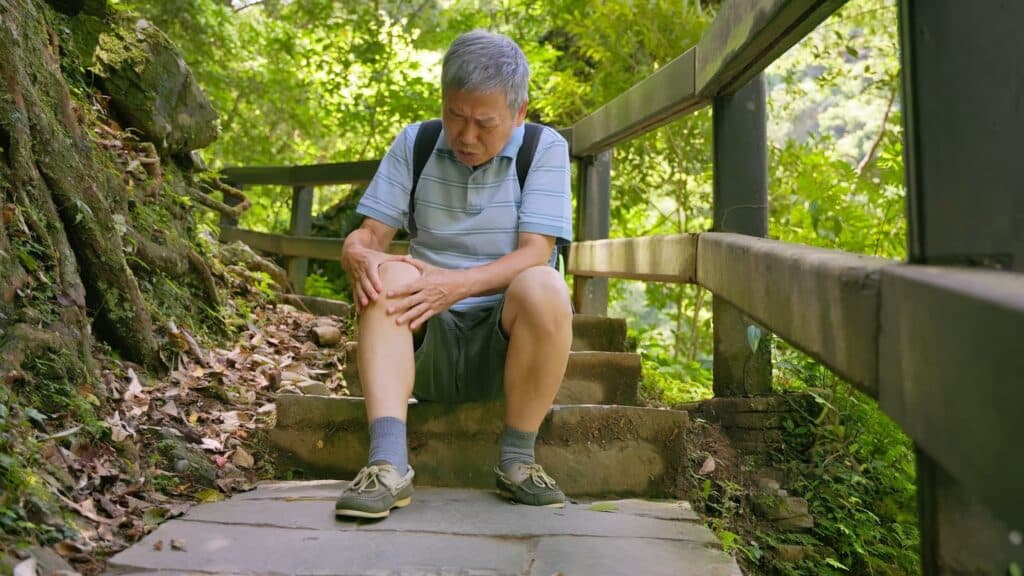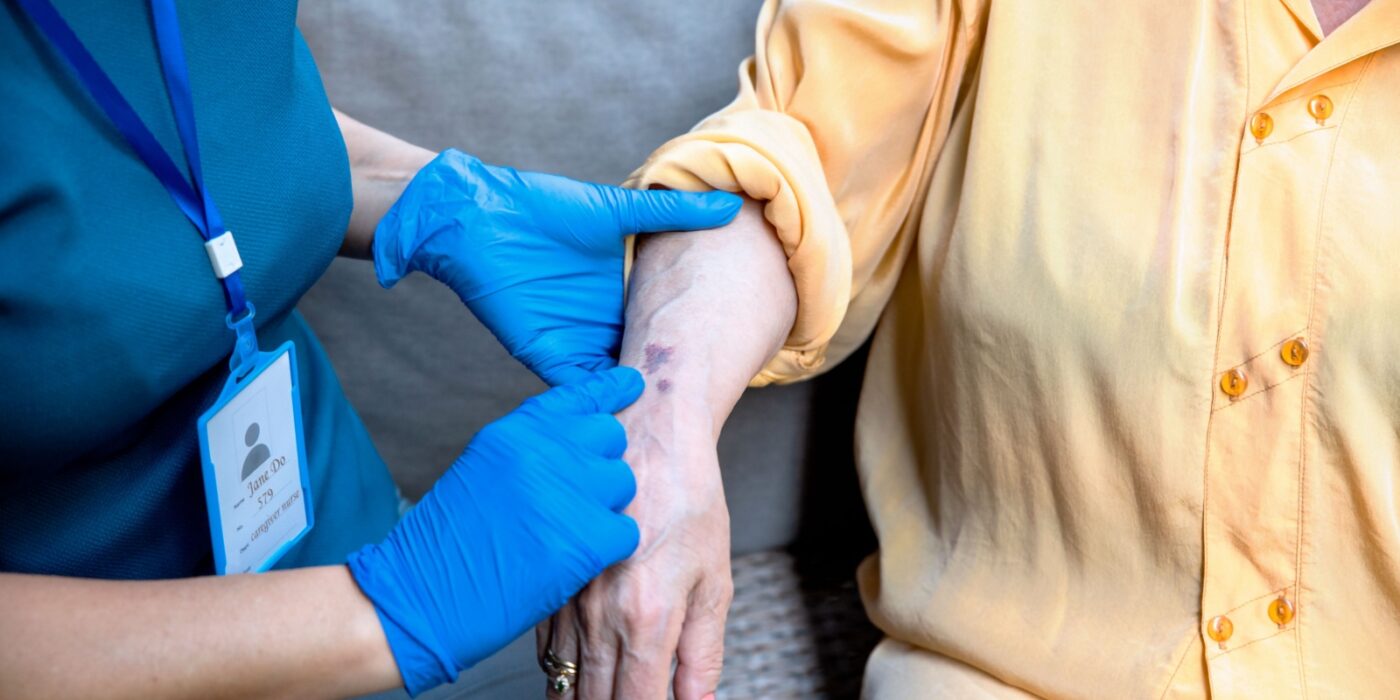Bruising can sometimes feel like a mystery—one day your skin looks fine, and the next, a purple patch appears seemingly out of nowhere. For older adults, bruising tends to occur more frequently and with greater intensity, often leaving caregivers and loved ones concerned about what’s going on beneath the surface.
The most common causes of bruising in seniors include thinning skin, weakened blood vessels, medications, underlying health conditions, sun damage, and reduced healing ability.
While bruises in older adults are often harmless, understanding why they happen can provide peace of mind and help with prevention and care. At NorBella Rogers, we prioritize the well-being of our residents through personalized care and comprehensive health services designed to support each person’s needs.
Why Do Seniors Bruise Easily?
As we get older, the body undergoes several changes that can increase the likelihood of bruising. Even small bumps or seemingly light touches can sometimes result in large, dark discolorations on the skin. Understanding the key contributors to bruising can help you better care for your skin and overall health.
Thinning Skin
One of the leading causes of bruising in older adults is thinning skin. With age, the layers of fat and connective tissue beneath the skin begin to break down. This includes a reduction in:
- Collagen and elastin, which provide strength and flexibility
- The fatty layer that acts as cushioning against bumps or falls
As a result, blood vessels are more exposed and vulnerable to damage, making it easier to bruise even from mild impacts.
Weaker Blood Vessels
Along with thinner skin, fragile blood vessels are another major cause of bruising in seniors. The walls of veins and capillaries can lose their elasticity over time, leading to tiny ruptures during minor accidents. When these blood vessels break, blood leaks out into the surrounding tissues, forming a bruise.
Medications That Thin the Blood
Many seniors take medications that interfere with normal blood clotting or increase bleeding risk, including:
- Blood thinners like warfarin or aspirin
- Steroids used to manage inflammatory conditions
- Certain antidepressants or anti-inflammatory drugs
If bruising becomes more frequent or severe, it’s a good idea to review medications with a healthcare provider.
Medical Conditions
Certain health conditions can also contribute to easy bruising. These may include:
- Liver disease, which affects clotting factors
- Blood disorders like hemophilia or leukemia
- Diabetes, which weakens blood vessels and impairs circulation
If you or a loved one experiences unexplained bruising along with other symptoms like frequent nosebleeds or bleeding gums, consult a doctor for evaluation.
Sun Damage Over Time
Years of sun exposure can lead to solar purpura, a condition where the skin bruises more easily—especially on the forearms and hands. UV radiation damages collagen and elastin fibers in the skin, making it thinner and more prone to bruising.
Slower Healing Response
As we age, the body’s natural ability to repair damaged tissues slows down. This means that bruises not only appear more often, but they may also take longer to heal.

Causes of Unexplained Bruising
It’s not uncommon for seniors to notice bruises without recalling how they got them. These mysterious bruises are often caused by minor bumps or pressure that wouldn’t have caused a mark in younger years. However, certain conditions could be at play:
- Vitamin deficiencies (particularly vitamin C and vitamin K)
- Side effects of medications
- Unrecognized small injuries from daily activities
If bruising is accompanied by pain, swelling, or frequent recurrence, medical advice should be sought.
How to Care for a Senior’s Bruising
Most bruises will heal on their own, but there are steps you can take to promote healing and reduce discomfort:
The R.I.C.E. Method
- Rest: Limit movement of the bruised area to prevent further injury.
- Ice: Apply a cold compress for 10-15 minutes to reduce swelling.
- Compression: Wrap the area gently with a soft bandage if possible.
- Elevation: Raise the bruised area above the heart if practical.
Topical Remedies
Natural treatments like arnica gel or vitamin K creams may help diminish the appearance of bruises faster. For pain relief, acetaminophen (Tylenol) is recommended over NSAIDs like ibuprofen or aspirin unless advised by a doctor.
Keep Skin Hydrated
Moisturized skin is more resilient. Using lotions rich in vitamins C and E or hyaluronic acid can help improve elasticity and reduce the risk of skin tears or bruising.
Allow Time for Healing
It’s normal for bruises to change color as they heal, typically shifting from deep purple to greenish-yellow over the span of 10 to 14 days.
Tips to Prevent Bruising in Seniors
While you can’t prevent every bruise, you can lower your chances of frequent bruising with a few simple lifestyle adjustments:
Protect Your Skin
- Wear long sleeves or soft padding when doing household tasks or physical activities.
- Apply sunscreen daily to reduce further sun-related skin thinning.
Eat a Nutrient-Rich Diet
- Boost intake of vitamin C to support blood vessel strength.
- Incorporate vitamin K for proper clotting function.
- Drink plenty of water to maintain skin elasticity.
Reduce Hazards at Home
- Clear walkways of clutter or loose rugs.
- Install handrails or grab bars in high-risk areas like bathrooms or staircases.
- Use non-slip mats in places where falls are more likely, like the shower.
Review Medications Regularly
Discuss all prescription and over-the-counter medications with your doctor, especially if you’ve noticed increased bruising.
Supporting Health & Wellness at NorBella Rogers
At NorBella Rogers, we recognize that small health concerns like frequent bruising can be distressing. That’s why our care team provides compassionate, individualized support to help seniors stay healthy and independent. From coordinating care with healthcare providers to creating safe living environments, we’re here to help you or your loved one feel safe and supported every day.
Schedule a tour of our community today to learn more about how we can support your health and well-being.

